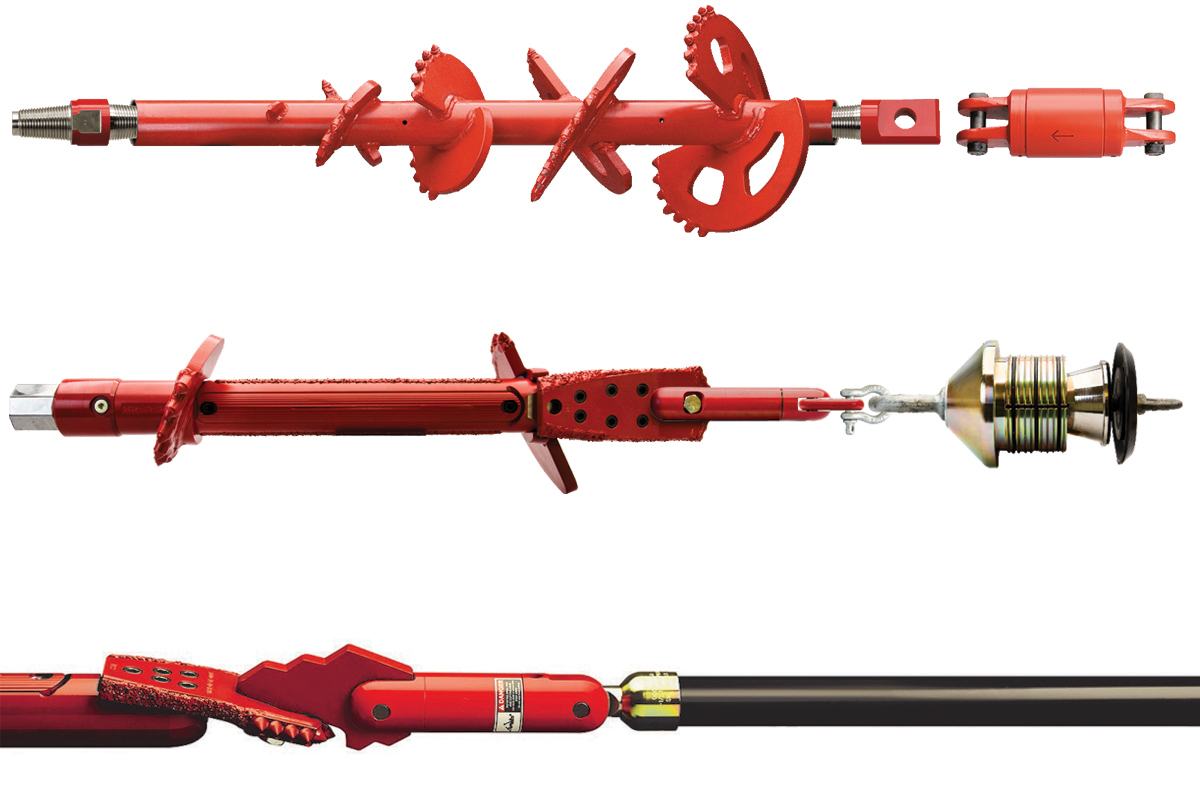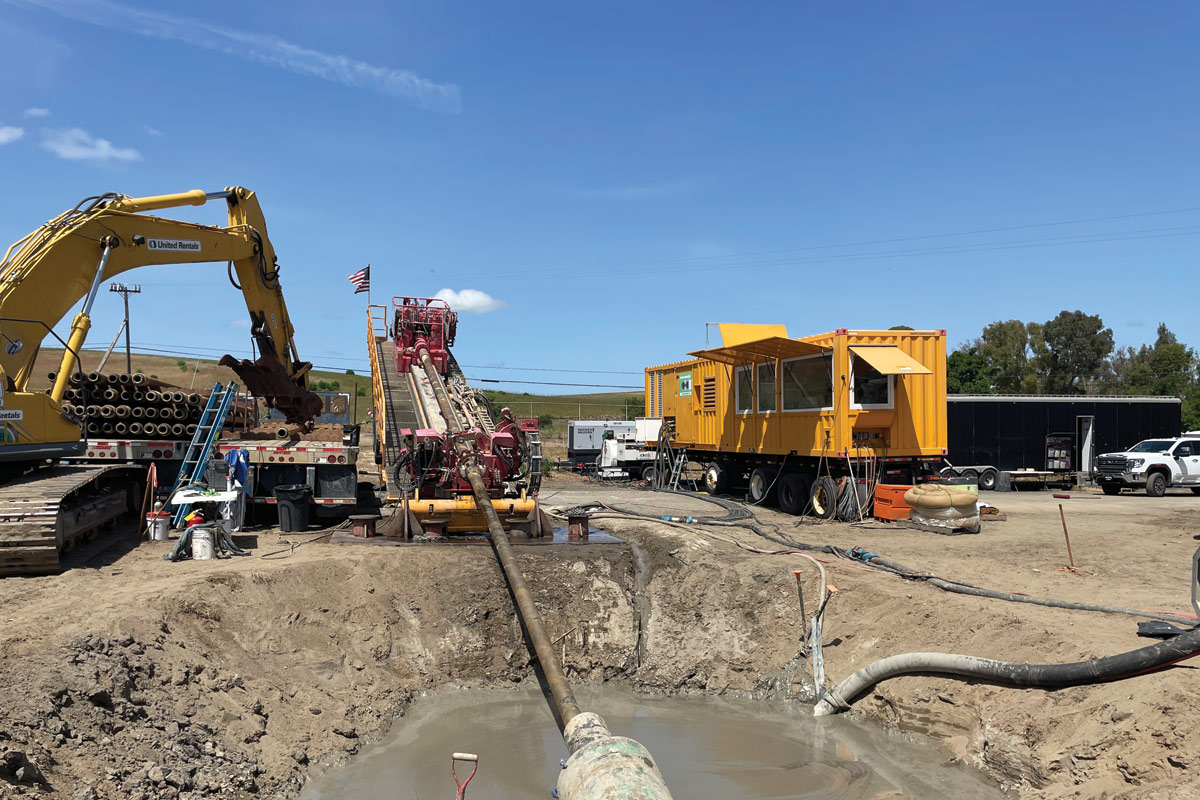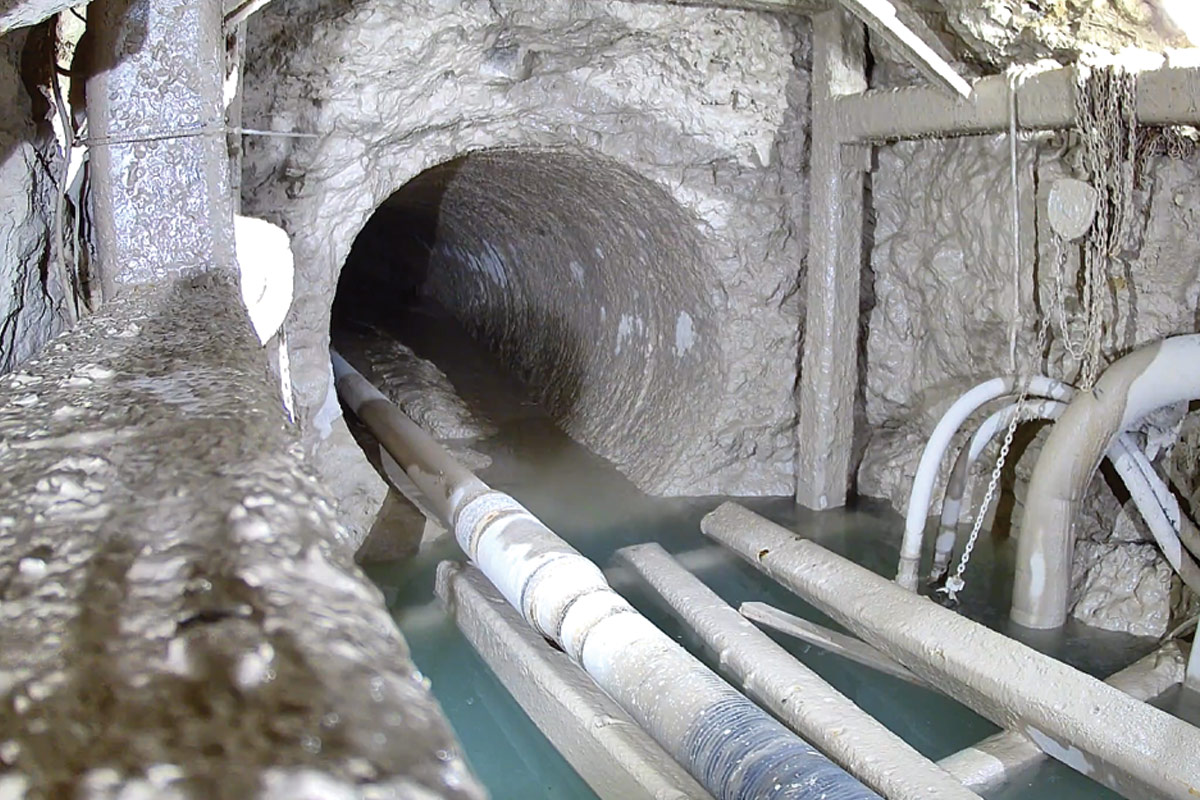Utility Locating with Ground Penetrating Radar:
June 2, 2011
 In the trenchless world, taking a step onto any jobsite comes with certain risks. With so many active and abandoned utilities, there are potential disasters on any jobsite. Avoiding these utilities is often a difficult and frustrating task. But how can you make sense of it all?
In the trenchless world, taking a step onto any jobsite comes with certain risks. With so many active and abandoned utilities, there are potential disasters on any jobsite. Avoiding these utilities is often a difficult and frustrating task. But how can you make sense of it all?Scott Urban of ERMCO, an electrical and communications contractor based in Florida, has been using ground penetrating radar (GPR) to locate utilities on jobsites for years. The GPR surveys provide directional drilling contractors information including tight horizontal location, pipe depth and abandoned or otherwise unknown lines directly in their path. After subcontracting the GPR service on a regular basis for several years, he purchased a GSSI for his crews.
“We use it on every job,” says Urban, “and we’re out there scanning before we start drilling, so we can evaluate the route and make changes before we begin. With so many utilities in the area, our routes have to vary in elevation and make turns at crucial points.”
By surveying before the ground is pierced, the crew can plan the route and avoid conflicts making the job much easier to complete, says Urban.
ERMCO partners with Trenchless Specialties of Orlando, Fla., for their directional drilling projects. The two
firms have been working together for years, by coordinating their trenchless jobs with accurate locating information. “This has been a key to succeeding in a crowded underground environment,” says Trenchless Specialties’ owner Randall Bratcher.
“We find unknown utilities on almost every job,” explains Bratcher. Both firms do as much as possible to develop an understanding of the subsurface before getting started, including gathering plans and drawings, working with one-call teams on public sites and performing their own utility locating. But it is the details that matter, advises Bratcher. As-builts are often incomplete or out of date and not all utilities can be traced with traditional electromagnetic locators. Adding GPR into the locating toolbox provides the extra detail and information that is not available elsewhere.
The theme parks in central Florida are prime examples of the difficult sites that Trenchless Specialties works on. “Our most complex jobs are often in the theme parks because they have all types of buried utilities to carry power, water, sewer, communications and we need to avoid them. It’s congested and we need to be precise,” notes Bratcher. He credits the extensive research and the combination of locating technologies that help his crew plan and effectively navigate through these densely packed drilling routes.
Thorough preparation and use of GPR for locating has financial benefits, as well. “Since we started using GPR on our jobs several years ago, the technology has improved, operators are more skilled and it’s much more economical,” says Bratcher. Moreover, he says, “GPR helps us save money, plain and simple.” By pre-planning with good information, the drilling proceeds efficiently and without delay. Avoiding utility (and equipment) damages and the costs of subsequent repairs is one savings, but the real benefit is increasing efficiency on the jobsite and getting more jobs completed.
 So, how does GPR work? Typically, three components make up a GPR system: the control unit, the GPR antenna and the survey wheel to measure distance. According to GSSI training manager Dan Welch, GPR is looking for any point where the electromagnetic properties of the materials change. As the operator walks over an area, the GPR system sends low-power radar waves into the subsurface from the antenna. The control unit then records the strength and time required for the return of reflected signals. Subsurface variations like pipes (metallic and non-metallic), wire, tanks and voids will cause significant reflections. These reflections appear on the screen in real-time, allowing the operator to identify both horizontal and depth positioning of buried utilities.
So, how does GPR work? Typically, three components make up a GPR system: the control unit, the GPR antenna and the survey wheel to measure distance. According to GSSI training manager Dan Welch, GPR is looking for any point where the electromagnetic properties of the materials change. As the operator walks over an area, the GPR system sends low-power radar waves into the subsurface from the antenna. The control unit then records the strength and time required for the return of reflected signals. Subsurface variations like pipes (metallic and non-metallic), wire, tanks and voids will cause significant reflections. These reflections appear on the screen in real-time, allowing the operator to identify both horizontal and depth positioning of buried utilities.Use of GPR for utility locating has been growing in popularity in recent years as the technology improves and becomes easier to use, and more people become aware of its benefits and capabilities. Granted, GPR is not the solution to every locator’s problem and it does have limitations depending on certain soil conditions. However, it does help where other technologies don’t suffice, so it is best to do some research and find out what it can do for you.
Peter Masters is an applications specialist and Jami Harmon is a marketing specialist for Geophysical Survey Systems Inc., Salem, N.H.




